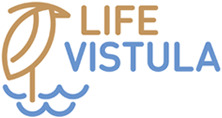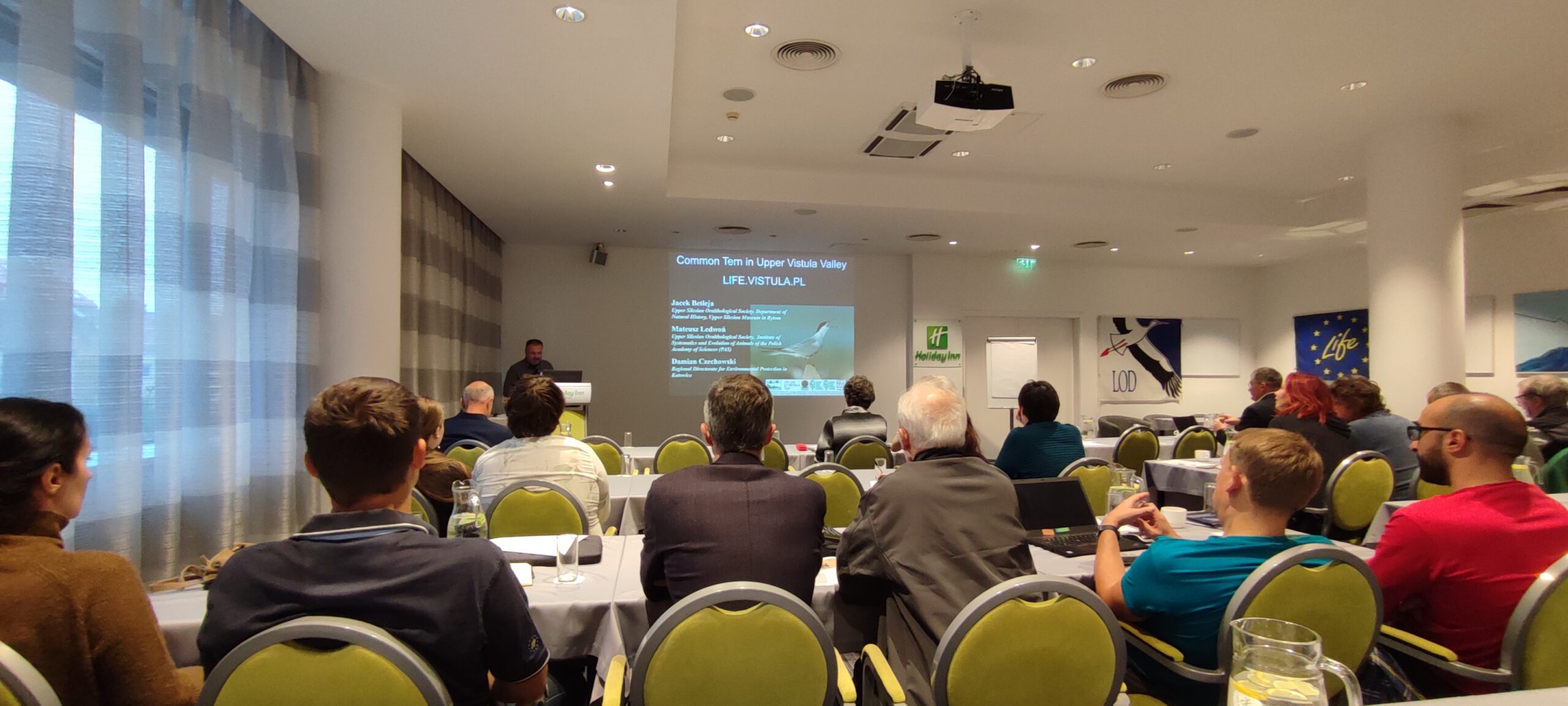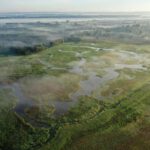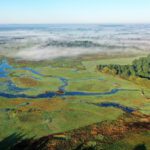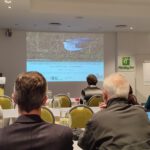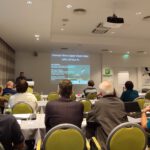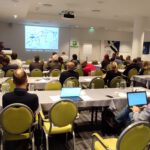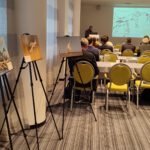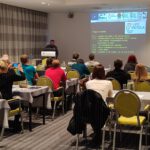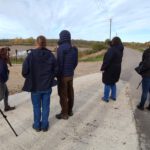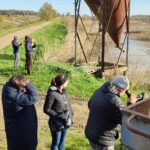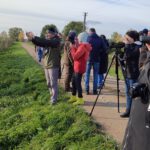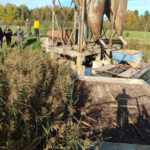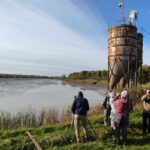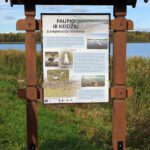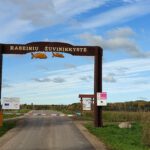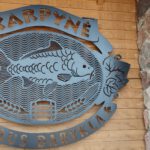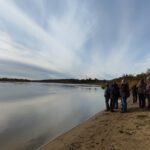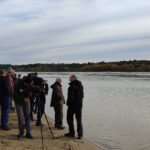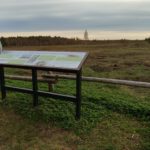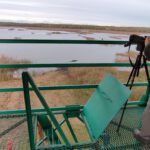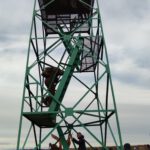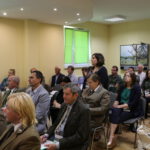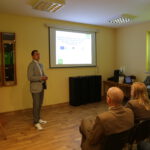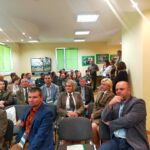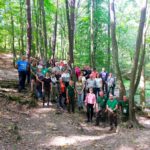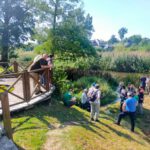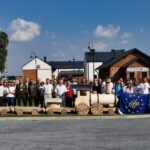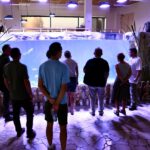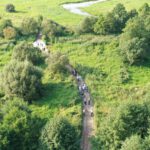September and October in the LIFE.VISTULA.PL project can be summarised as a period of intensive promotion during several events.
The XXXIII Jurassic Symposium was held at the ZPKWŚ Educational and Scientific Centre in Smoleń on 7-8.09.2023. The main theme was water and related issues concerning the protection of water areas, wetlands and spring areas. The conference programme included a paper and discussion section and a field session. Using the example of the implementation of our project, we wanted to familiarise participants from Poland, Lithuania, Slovakia and the Czech Republic with the importance of anthropogenic water bodies in the protection of bird habitats.
On 13-14 September 2023, the LIFE.VISTULA.PL project team participated in the mid-term conference of the LIFE4Delta project in Umianowice. On the second day of the meeting, we had the opportunity to present our project among other Polish LIFE projects working in the area of wetland habitat protection and retention. It was an opportunity to exchange experiences between projects and see the effects of activities on the Nida River, which is being restored to its former beauty and water after many years.
The 20th International Conference on Technical Control of Dams was held on 12-15 September 2023. This important event was co-organised by the Upper Silesian Waterworks Company. One of the main themes of the conference was sustainability and the environmental impact of hydraulic structures. Mr Andrzej Siudy, Manager of the Goczałkowice Reservoir Dam, on a field trip introduced the participants to the Silesian point of view on nature protection, pointing out the possibility of agreement with organisations and institutions protecting the environment. This resulted in the construction of a bird island – the Bird Barrel.Investments of this type in hydro-technical facilities are not usually feasible. However, the Goczałkowice Reservoir is a multi-purpose reservoir, and nature conservation ranks fifth among the reservoir’s most important tasks.
In October, we promoted the project a little further from our region. On 11-13.10 we participated in an important event, which was the XXVII National Conference of Fishery Users of Lakes, Rivers and Reservoirs in Krutyń in the Mazurian Lake District. The organiser of this event is the Institute of Inland Fisheries in Olsztyn, and the participants are managers of reservoirs, fishing ponds, lakes and rivers where fishing is carried out, as well as scientists involved in fish breeding and welfare. For our project team, it was important to show that also for nature conservation institutions, maintaining fisheries management is important in the context of species or area protection, using the example of Natura 2000 areas. When presenting the LIFE project, we highlighted our success in finding a common language between fishermen, ornithologists and nature conservation institutions in bird protection.
A week later, on 18-19 October, we travelled to Vilnius for an international conference entitled Island breeding bird conservation: challenges, best solutions and practices. The seminar was organised by the Lithuanian Ornithological Society as part of the LIFE project on the adaptation of the capacity of key tern habitats in Lithuania. It was attended by representatives from 11 countries, including Croatia, Bulgaria, Israel, the UK and Georgia. During the conference, we were able to learn about the lessons learned for the protection of tern habitats.
The presentation of our project by Dr Jacek Betleja from the Upper Silesian Ornithological Circle was met with great interest. Above all, the way in which the islands were made, their sustainability and innovative approach was discussed during the seminar.
Our interest was particularly piqued by the LIFE on the Edge project – restoring habitat for terns and waders in England, which is restoring coastal, intertidal and dune habitats in nine coastal areas in England. The project uses dredged material to recharge gravel habitats, restore salt and freshwater marshes and create new islands in coastal lagoons.
A second interesting project is Life For Pomorie Lagoon, where silt islands have been restored to restore declining numbers of several tern species. Pomorie Lagoon is a natural lagoon along the Bulgarian Black Sea coast, partly modified by human activity to collect sea salt and apply therapeutic mud. Its location along Europe’s second largest bird route, the Via Pontica, makes it an important stopover during bird migration.
The final event was a presentation of the LIFE project and the importance of anthropogenic reservoirs in bird protection at a conference on 27 October in Czeladź, organised by the Silesian Agricultural Advisory Centre in Częstochowa as part of the Local Water Partnerships in the Silesian Voivodeship. Participants at the conference were mainly representatives of local authorities and the Polish Waters.
